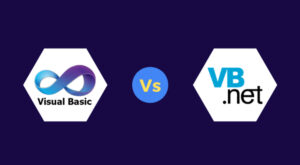
Programming Windows Forms (WinForms) applications using Visual Basic .NET or C# is a common practice. WinForms is a technology for building Windows desktop applications with a graphical user interface. Here’s an overview of what programming WinForms:
- Development Environment:
- Visual Studio 2005 (Visual Studio .NET 2005) and Visual Studio 2003 were popular development environments for creating WinForms applications. Visual Studio provided a comprehensive set of tools for designing, coding, and debugging WinForms applications.
- Language:
- Visual Basic .NET and C# is the primary programming languages for WinForms development. Both languages provided similar capabilities for building Windows applications.
- .NET Framework:
- .NET Framework 2.0 is the primary version used for WinForms development. This framework introduced several improvements over previous versions and offered a rich set of libraries for developing desktop applications.
- UI Design:
- You would use the Windows Forms Designer in Visual Studio to create the user interface of your application. This involved dragging and dropping controls (buttons, text boxes, labels, etc.) onto forms and setting their properties.
- Event-Driven Programming:
- WinForms applications are event-driven, meaning you’d write code to respond to events triggered by user interactions with the UI, such as button clicks, mouse events, and key presses.
- Data Binding:
- WinForms provided data binding capabilities, allowing you to easily connect controls to data sources, such as databases, and synchronize data between the UI and data models.
- Database Access:
- ADO.NET is commonly used for database access in WinForms applications. You’d use ADO.NET to connect to databases, execute SQL queries, and work with data.
- Error Handling:
- Exception handling is an essential part of WinForms development to ensure the application’s robustness. You’d use try-catch blocks to handle exceptions gracefully.
- Deployment:
- Deploying WinForms applications often involved creating setup projects to package and distribute your application. MSI (Windows Installer) was a common technology used for deployment.
- Security:
- You’d need to consider security practices for your WinForms applications, such as user authentication, data encryption, and permission management.
- Community and Resources:
- In 2006, there ismany books, tutorials, and online forums available to support WinForms developers. The developer community is active and shared knowledge and code samples.
- Graphics and Multimedia:
- You could incorporate graphics and multimedia elements into your WinForms applications using GDI+ for drawing and displaying images, as well as Windows Media Player for multimedia playback.
- Threading:
- Multithreading is used to keep the application responsive. You’d use background threads to perform time-consuming tasks without blocking the UI.
- Accessibility:
- Making applications accessible to users with disabilities is an important consideration. WinForms provided tools and features to support accessibility standards.
Programming WinForms is a prevalent and effective way to develop Windows desktop applications. Since then, technology evolving newer alternatives, such as WPF and UWP, have gained popularity. However, WinForms is still used for maintaining and updating legacy Windows applications.



